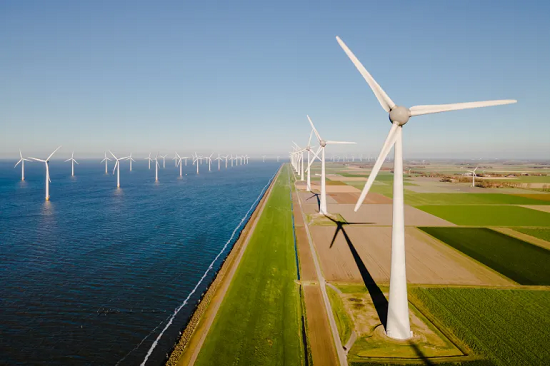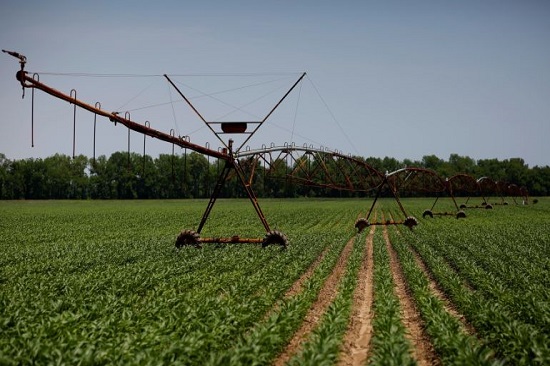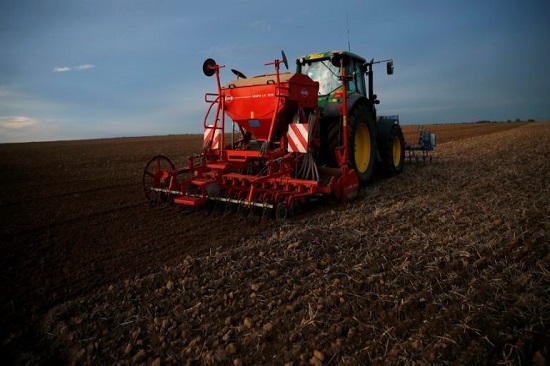| News Details |
Digital agriculture leads the future of global food production
2024-03-04

Assistant Professor Dr. Nawfal Adnan Sabri
Digital agriculture is one that uses ICTs and ecosystem data to support the timely delivery and development of information and services to farmers.

Digital agriculture seems inevitable in the future with increasing numbers of giant fermentation ponds producing milk products and smart tractors knowing where they are in the fields.
Humans have always been at the mercy of nature and climate change in the past, as agricultural production relied entirely on the amount of rainfall that falls annually, temperature and humidity changes, and geography limitations, for example, it was not possible to grow plants that needed high temperatures in cold regions and vice versa.
The changing climatic conditions controlled the nature of the food product, fruits and vegetables were seasonal, and meat is the same meat known for thousands of years, but with the tremendous technical developments and the entry into the world of the digital revolution and artificial intelligence, it is now possible to control this, Agricultural technology is constantly evolving, and every day we are told stories about cultured meat, robots that harvest fruits at breakneck speed, and global companies pouring millions of dollars into what has become widely known as digital agriculture that provides all food items at all times of the year regardless of climate change, while significantly preserving the environment by reducing the volume of polluting emissions of toxic gases resulting from agricultural operations by traditional means that previously prevailed.
Digital agriculture is agriculture that uses ICTs and ecosystem data to support the timely delivery and development of information and services to farmers, to make agriculture profitable, socially, economically and environmentally sustainable, while delivering safe, nutritious and affordable food for all.
Digital agriculture seems inevitable in the future with the increasing number of giant fermentation ponds that produce dairy, smart tractors that know where they are in the fields, and lead themselves in sowing and harvesting operations, and high-nutritional meat made from plants, while reducing the cost of production using sensors and water-saving micro-irrigation systems, as well as providing the necessary information to farmers in a timely manner using cloud computing and smart applications, as farmers receive easy-to-follow recommendations for irrigation. The use of pesticides, fertilization and other agricultural practices used to improve the crop, increase its quantity with significant savings in material costs.

Digital agriculture also seems inevitable with increasing human populations, the constant need for more food, and urbanization that has reduced the size and area of arable land in the world.
The promise of digital agriculture is limitless, and many enthusiasts of this revolution argue that the use of technology in agriculture will allow humanity to produce more food on far less land than before, reduce waste and pollutants, protect biodiversity, and create more jobs around the world.
Investments by millions:
A recent study by strategic consulting and market research firm Blue weave consulting revealed that the global market for digital agriculture reached $4,770.8 million in 2020 and is expected to reach $10,702.3 million by 2027, with an annual growth rate of 12.7%, due to increased demand for food and the increasing use of technology in agriculture, as well as significant savings in production costs through the application of modern agricultural techniques.
More productive and less expensive:
Traditional agriculture is expensive, from preparing the soil and receiving seeds to using fertilizers to fertilize the soil, using pesticides to control pests and diseases, and reaching the harvest stage, all of which require a lot of money, and fertilizers and pesticides, for example, consume a large part of agricultural investment. Fertilizer spending in the United States rose from $8.6 billion in 1985 to $23.5 billion in 2016.
A study by Economic Research Services (ERS) for the U.S. Department of Agriculture found that farmers' use of digital technologies such as yield mapping—the process of collecting data on crop productivity in different geographic environments to determine which produce the most for a particular food product or combining this technology with variable-rate technology (VRT)—enabled them to save $25 per acre.
The study showed that the percentage of savings using digital technologies in agriculture is 4.5% of the cost of production by traditional methods, and that this will bring abundant profit to farmers, as well as to consumers, as it will contribute to the decline in the prices of food products in the markets. The savings using digital technologies in agriculture amount to 4.5% of the cost of production by traditional methods.

Digital agriculture protects the environment:
In addition to significant savings in money and increased production, digital agriculture contributes effectively to protecting the environment, as traditional agriculture is one of the largest sources of pollution, especially carbon dioxide emissions, which have negatively contributed to climate change globally.
According to a study by the Consultative Group on International Agricultural Research (CGIAR), the global food system, from the manufacture and use of fertilizers to soil fertilization to the storage and packaging of the food produced, contributes to more than a third of global greenhouse gas (GHG) emissions.
The World Economic Forum estimated that if only 15-20% of the world's farms used digital farming technologies, global food production would increase by 10-15%, polluting emissions would be reduced by 10% and 20% of the amount of water used in agricultural operations would be saved. All these factors contribute to the increasing use of digital farming techniques around the world, which will be prevalent in the agricultural sector in the near future.
#university_of_anbar
#Upper_Euphrates_Basin_Developing_Center









